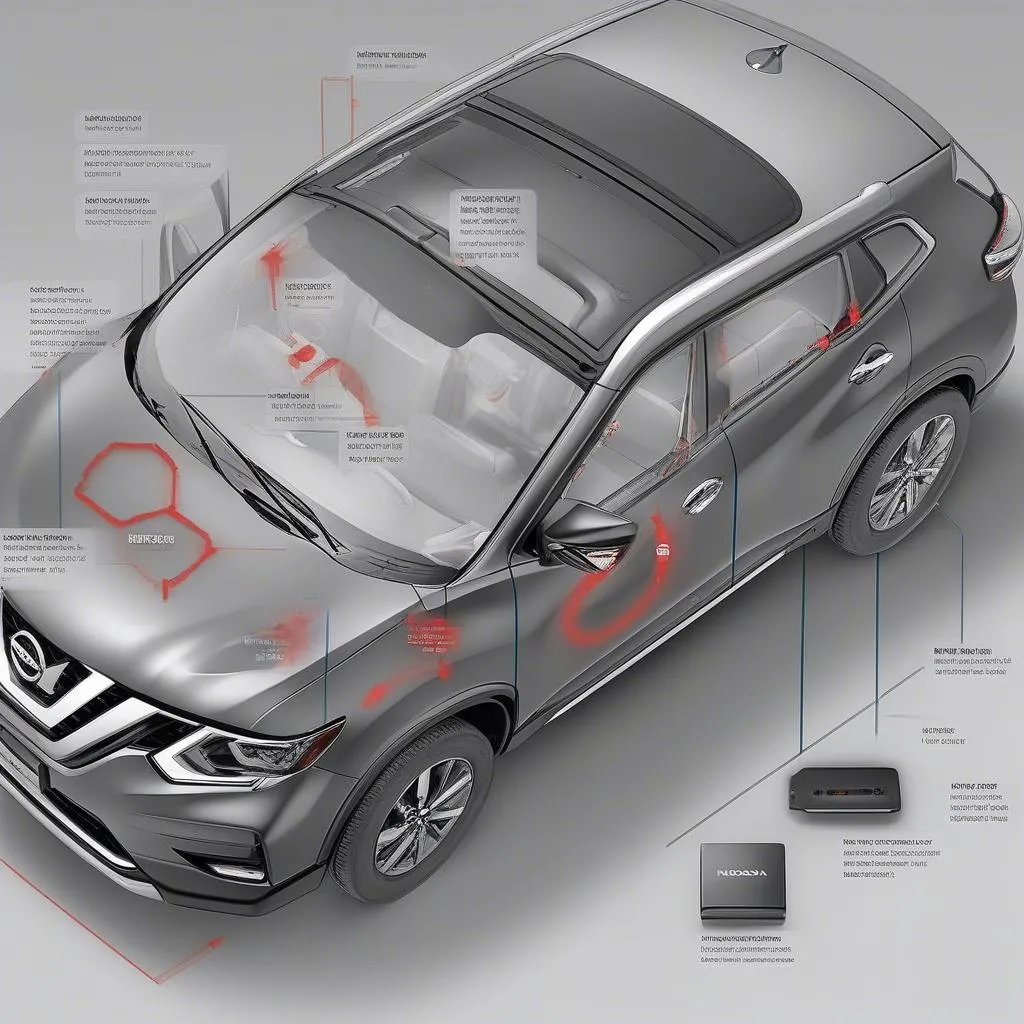The 1996 Jeep Cherokee brake warning light can be a frustrating issue, signaling anything from a simple fix to a more serious problem. Understanding why this light illuminates and knowing how to troubleshoot it can save you time and money, and more importantly, keep you safe on the road. This guide provides a comprehensive overview of the common causes, diagnostic procedures, and solutions for a 1996 Jeep Cherokee brake warning light.
Understanding the Brake Warning Light
The brake warning light in your 1996 Jeep Cherokee is designed to alert you to potential issues within the braking system. It can indicate several problems, including low brake fluid, a malfunctioning parking brake, or issues with the ABS system. Ignoring this light can lead to significant safety risks, so addressing it promptly is crucial.
Common Causes of a 1996 Jeep Cherokee Brake Warning Light
Several factors can trigger the brake warning light in your 1996 Jeep Cherokee. Here are some of the most common culprits:
- Low Brake Fluid: This is the most frequent cause. A leak in the brake lines, worn brake pads, or a failing master cylinder can deplete the brake fluid level.
- Engaged Parking Brake: Sometimes, the light simply indicates that the parking brake is engaged. Double-check to ensure it’s fully released.
- Faulty Brake Light Switch: This switch, located near the brake pedal, can malfunction, causing the brake lights and warning light to stay on.
- ABS Issues: If your Jeep is equipped with Anti-lock Brakes (ABS), a problem with the system, such as a faulty sensor or pump, can trigger the warning light.
- Worn Brake Pads: As brake pads wear down, the brake fluid level in the master cylinder drops. This can trigger the warning light.
Diagnosing the Problem
Before rushing to a mechanic, you can perform some basic checks yourself:
- Check the Parking Brake: Ensure the parking brake is fully disengaged.
- Inspect Brake Fluid Level: Open the hood and locate the brake master cylinder. Check the fluid level. If it’s low, add brake fluid that meets the specifications in your owner’s manual.
- Check for Leaks: Inspect the brake lines, calipers, and wheel cylinders for any signs of leakage. Look for wet spots or dripping fluid.
Solutions and Repairs
Depending on the diagnosis, the solution can range from a simple top-up of brake fluid to more complex repairs.
- Adding Brake Fluid: If the fluid level is low and there are no leaks, adding brake fluid might resolve the issue. However, persistently low fluid suggests a leak that needs addressing.
- Replacing Worn Brake Pads: Worn brake pads require replacement. This is a relatively straightforward procedure for a DIYer with basic mechanical skills.
- Repairing or Replacing Brake Components: Leaky brake lines, a faulty master cylinder, or a malfunctioning ABS system require professional repair or replacement.
When to Seek Professional Help
If you’re uncomfortable working on your brakes or can’t identify the problem, it’s best to consult a qualified mechanic. Brake issues can compromise your safety, so don’t hesitate to seek professional help.
Conclusion
The 1996 Jeep Cherokee brake warning light is a crucial safety feature. Understanding its potential causes and knowing how to troubleshoot the problem can prevent more serious issues and ensure your safety on the road. Addressing the warning light promptly and seeking professional help when needed are vital for maintaining a safe and reliable vehicle. Remember, a well-maintained braking system is essential for your safety and the safety of others on the road.
FAQ
-
What should I do if my brake warning light comes on while driving? Pull over safely and check your parking brake. If it’s disengaged, check your brake fluid level. If the fluid is low or you notice any leaks, do not continue driving and seek professional help.
-
Can I drive my Jeep Cherokee with the brake warning light on? It’s highly discouraged. Driving with a potentially compromised braking system is dangerous.
-
How often should I check my brake fluid level? Checking your brake fluid level at least once a month is a good practice.
-
How much does it cost to fix a brake warning light issue? The cost varies depending on the cause. A simple fluid top-up is inexpensive, while replacing a master cylinder can be more costly.
-
What is the difference between the brake warning light and the ABS light? The brake warning light indicates a general issue with the braking system, while the ABS light signifies a problem specifically with the Anti-lock Braking System.
-
Can worn brake pads cause the brake warning light to come on? Yes, as the brake pads wear down, the brake fluid level in the master cylinder drops, which can trigger the warning light.
-
Is it safe to add brake fluid myself? Yes, as long as you use the correct type of fluid specified in your owner’s manual. However, if you’re unsure, consult a mechanic.

